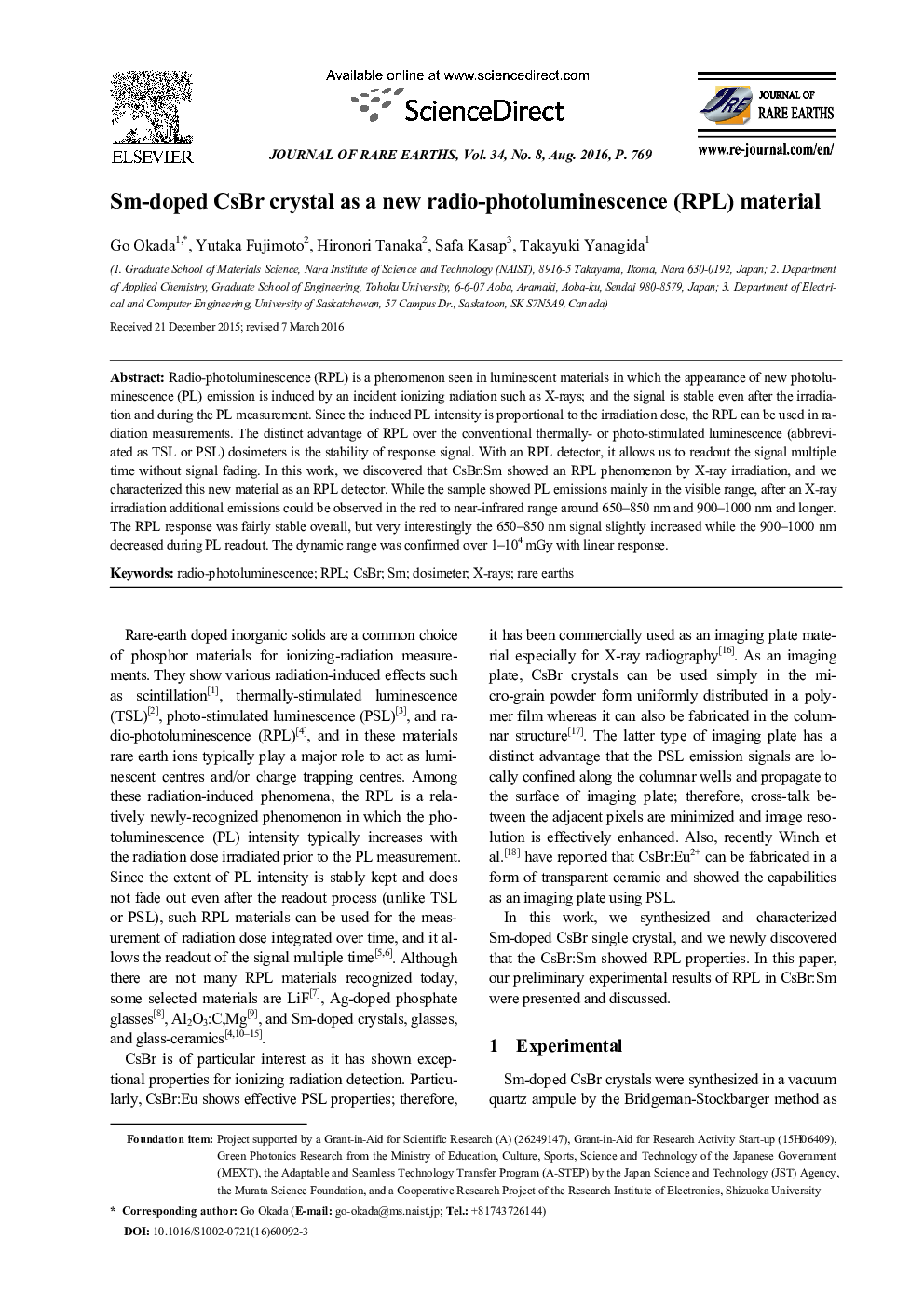| Article ID | Journal | Published Year | Pages | File Type |
|---|---|---|---|---|
| 1258848 | Journal of Rare Earths | 2016 | 5 Pages |
Radio-photoluminescence (RPL) is a phenomenon seen in luminescent materials in which the appearance of new photoluminescence (PL) emission is induced by an incident ionizing radiation such as X-rays; and the signal is stable even after the irradiation and during the PL measurement. Since the induced PL intensity is proportional to the irradiation dose, the RPL can be used in radiation measurements. The distinct advantage of RPL over the conventional thermally- or photo-stimulated luminescence (abbreviated as TSL or PSL) dosimeters is the stability of response signal. With an RPL detector, it allows us to readout the signal multiple time without signal fading. In this work, we discovered that CsBr:Sm showed an RPL phenomenon by X-ray irradiation, and we characterized this new material as an RPL detector. While the sample showed PL emissions mainly in the visible range, after an X-ray irradiation additional emissions could be observed in the red to near-infrared range around 650–850 nm and 900–1000 nm and longer. The RPL response was fairly stable overall, but very interestingly the 650–850 nm signal slightly increased while the 900–1000 nm decreased during PL readout. The dynamic range was confirmed over 1–104 mGy with linear response.
Graphical AbstractFigure optionsDownload full-size imageDownload as PowerPoint slide
